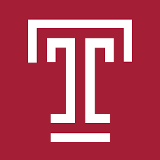Livingstone Undergraduate Research Award in STEM

Jack Kraynak

Minimizing Cell Death During the Extrusion Bioprinting of Gelatin-Alginate Bioinks
View Jack's project online
This project examines the mechanical aspects of extrusion bioprinting that directly affect the viability and number of cells that die during each ‘print’. Bioprinting is a method of creating scaffolds out of cells that can be used to realistically mimic bodily environments such as human tissue. Bioprinting is a new and advancing technology, and this paper examines the cost of using different printing methods to find the most cost effective and easily performed type of bioprinting and bioink that has the greatest quality.
What is your major and expected year of graduation?
I am a Bioengineering Major expected to graduate in 2023.
What inspired you to pursue your project?
I was inspired to write this paper mainly by my time working as a student worker at the Charles Library makerspace during my Freshman year at Temple until the school closed due to COVID-19. While working in the makerspace, I began exploring the connection between engineering and 3D printing. In turn this led me on the path to become heavily interested in bioprinting, a new technology that excites me because of its enormous potential in the field of biotechnology.
What does winning this award mean to you?
I have so much gratitude towards Temple University Libraries for choosing me to receive this award. I am now even more motivated and excited to continue my research and quest for knowledge in the topic of bioprinting and the field of bioengineering in general. Thank you again!
How did the Libraries support your research?
Temple University Libraries were extremely crucial as a resource for finding all of the literature cited in my engineering proposal. I used the Temple library website to access all of the materials used in this paper. Furthermore, during the course in which I wrote this engineering proposal, a Temple librarian visited our class and discussed different ways to utilize keywords and the searching tools of different databases. This maximized the content of the papers that I found while researching and saved a substantial amount of time from an already lengthy research process.
3-D printing technology and cell-carrying “bioinks” together offer a new bioengineering approach to constructing scaffolds for growing living tissues and ultimately fully functioning organs. Extrusion 3-D printing in particular offers advantages in availability and cost; but shear stress from the extrusion process damages bioink cells, reducing their viability. Using gelatin-alginate bioinks as a model, Jack studied different extrusion-nozzle geometries and bioink concentrations to find a combination that minimizes shear stress. His research benefited greatly from sources he found in Charles Library’s database subscriptions, as well as from his 3D printing experience as a student worker in the Charles Library Makerspace.
—Joe Danowsky, Instructor and Coordinator of Technical Communication, College of Engineering
This award is generously sponsored by John H. Livingstone, SBM ’49.
